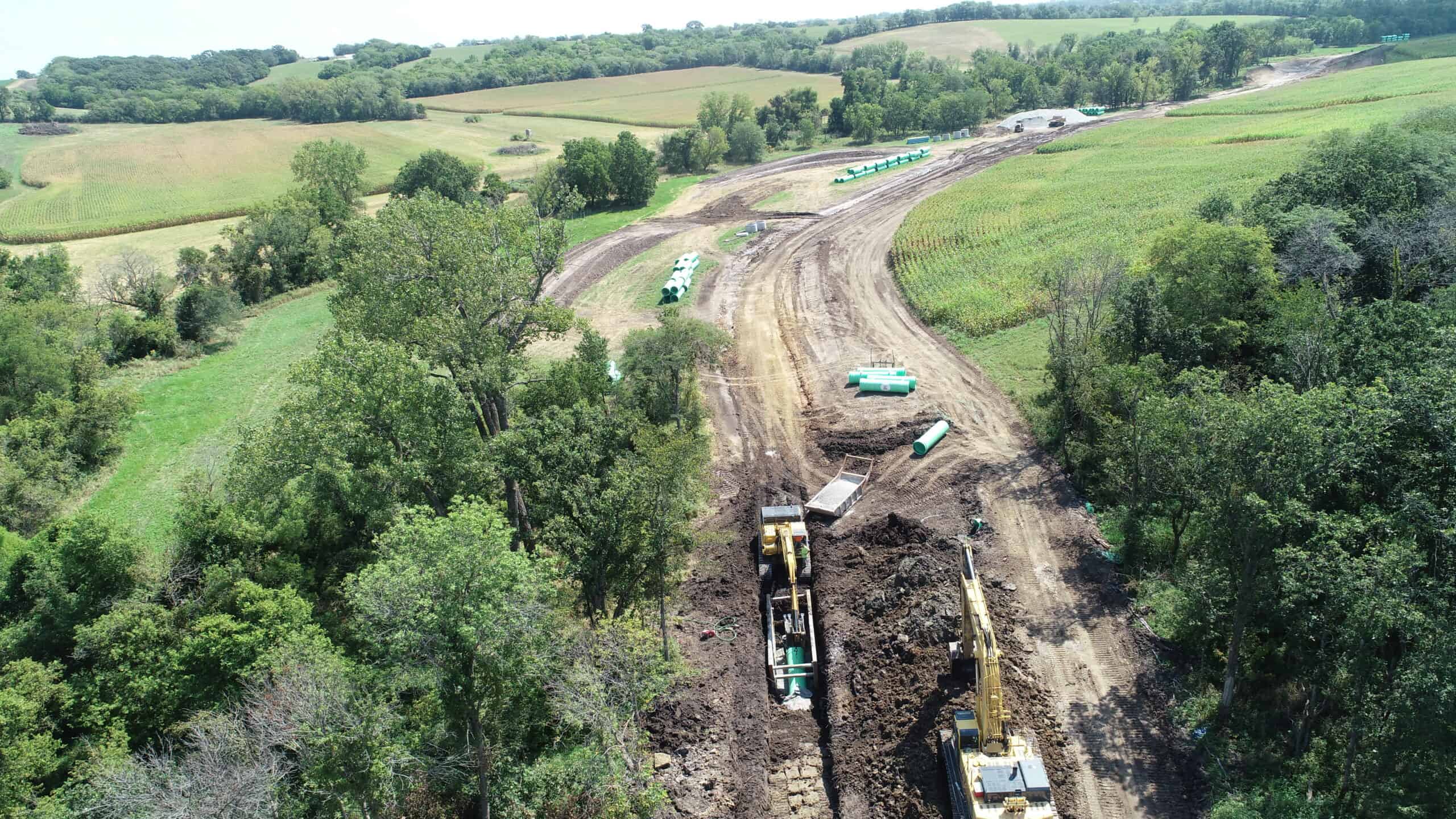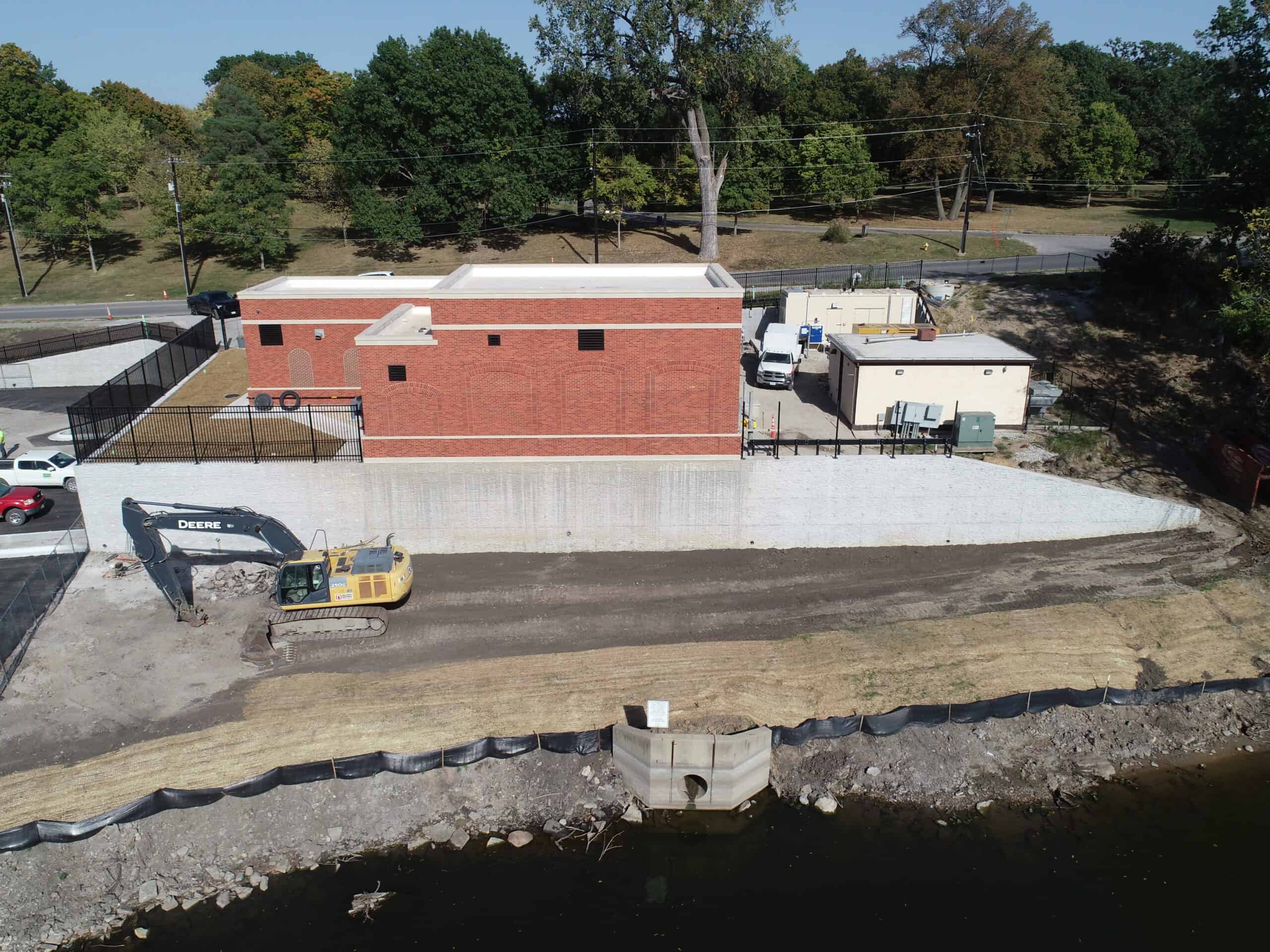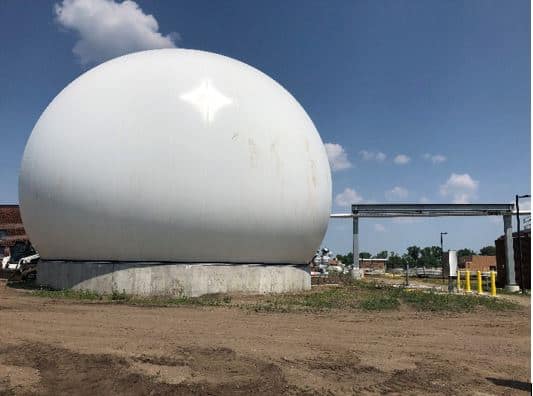
Minnesota Highway 23 "North Gap" Expansion Rebuilds Channel’s Resiliency
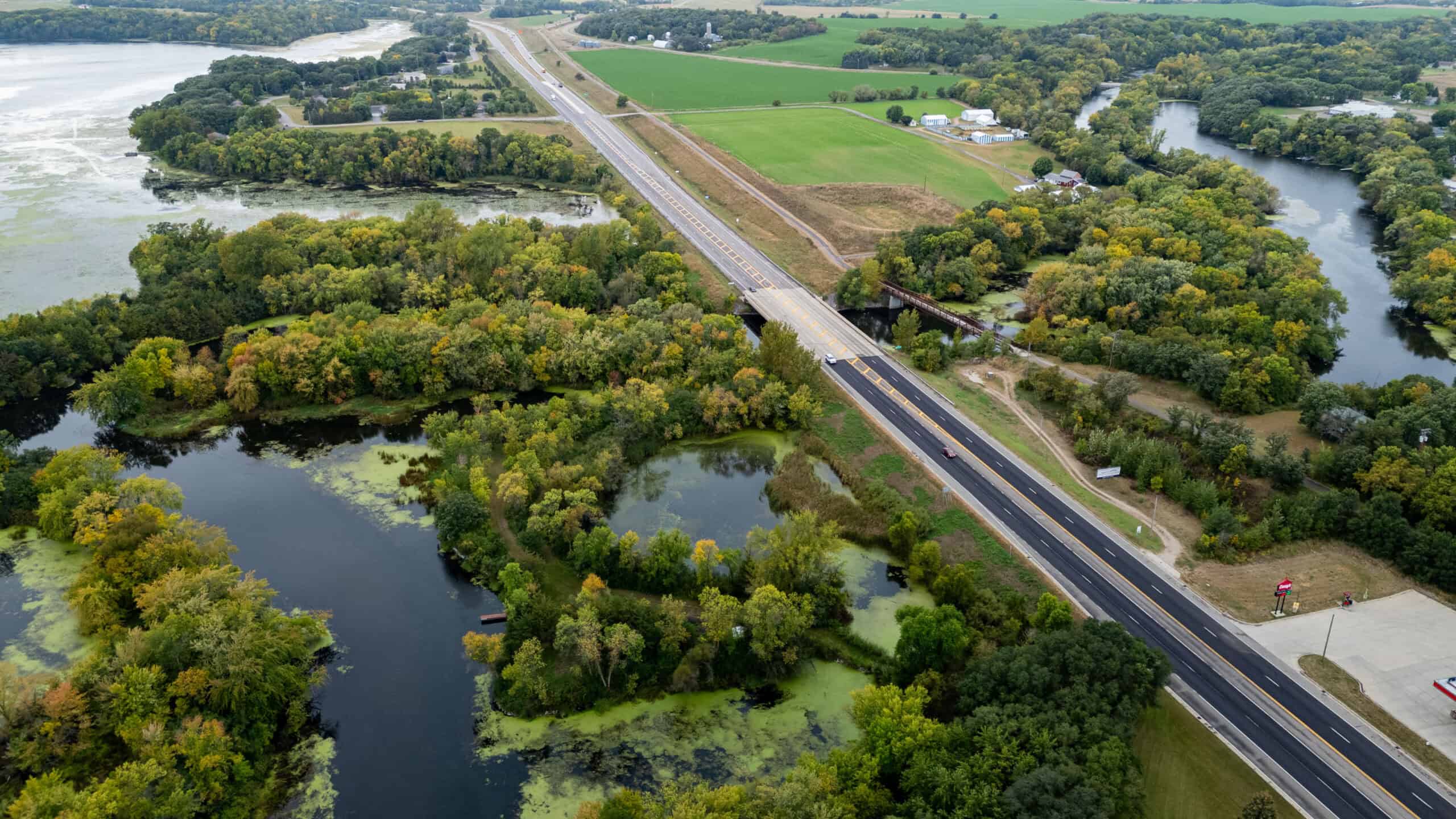
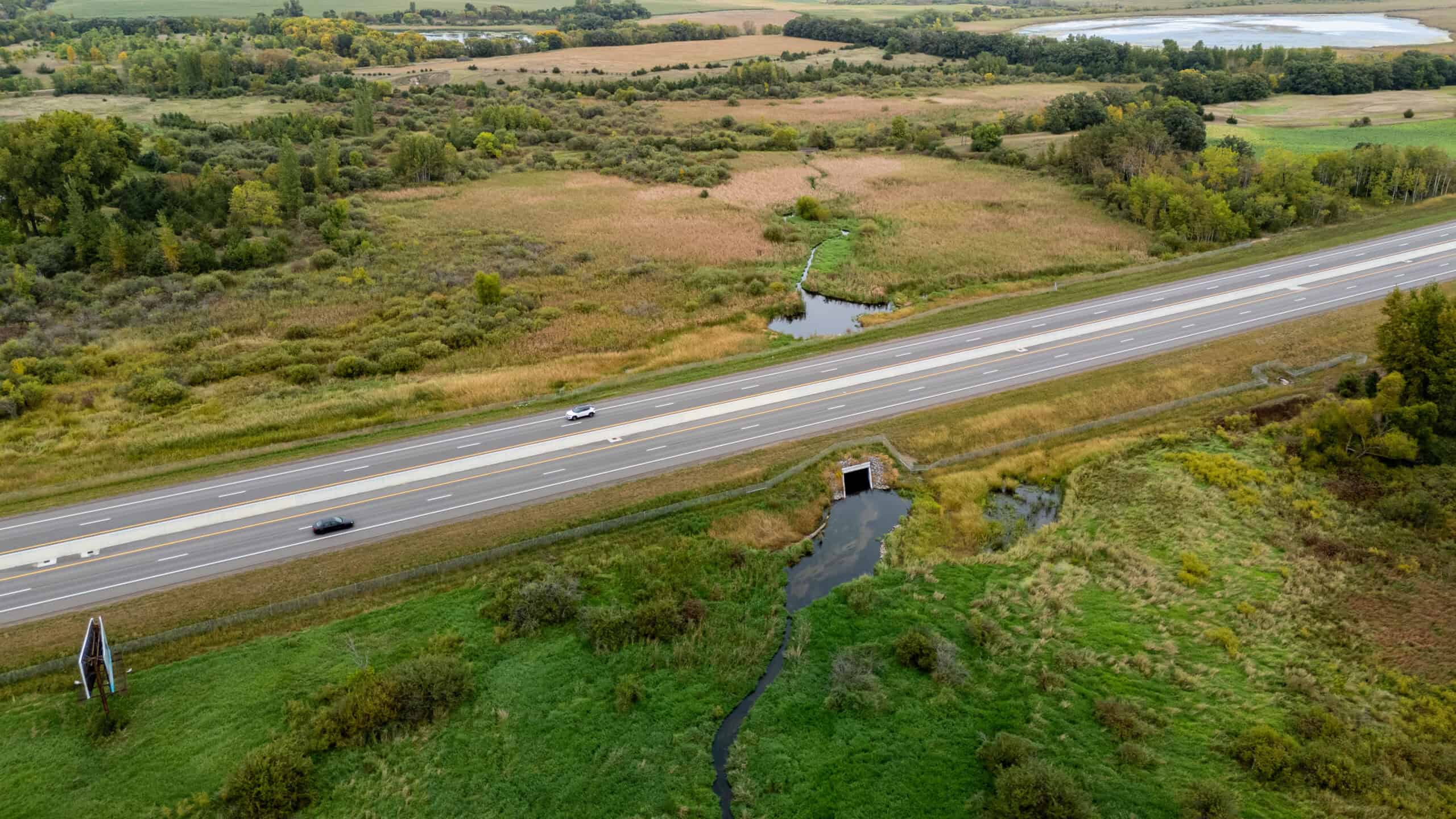
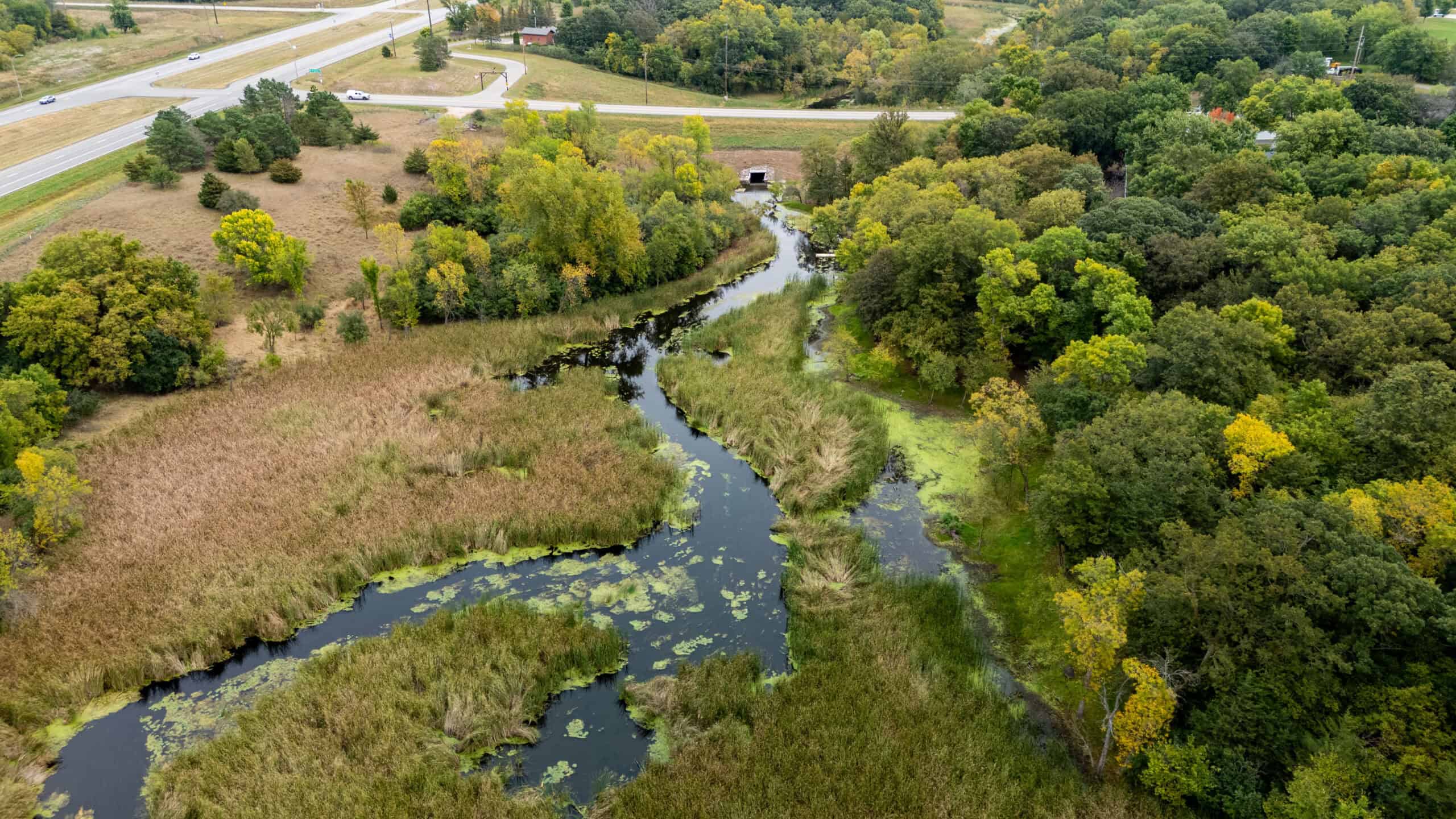
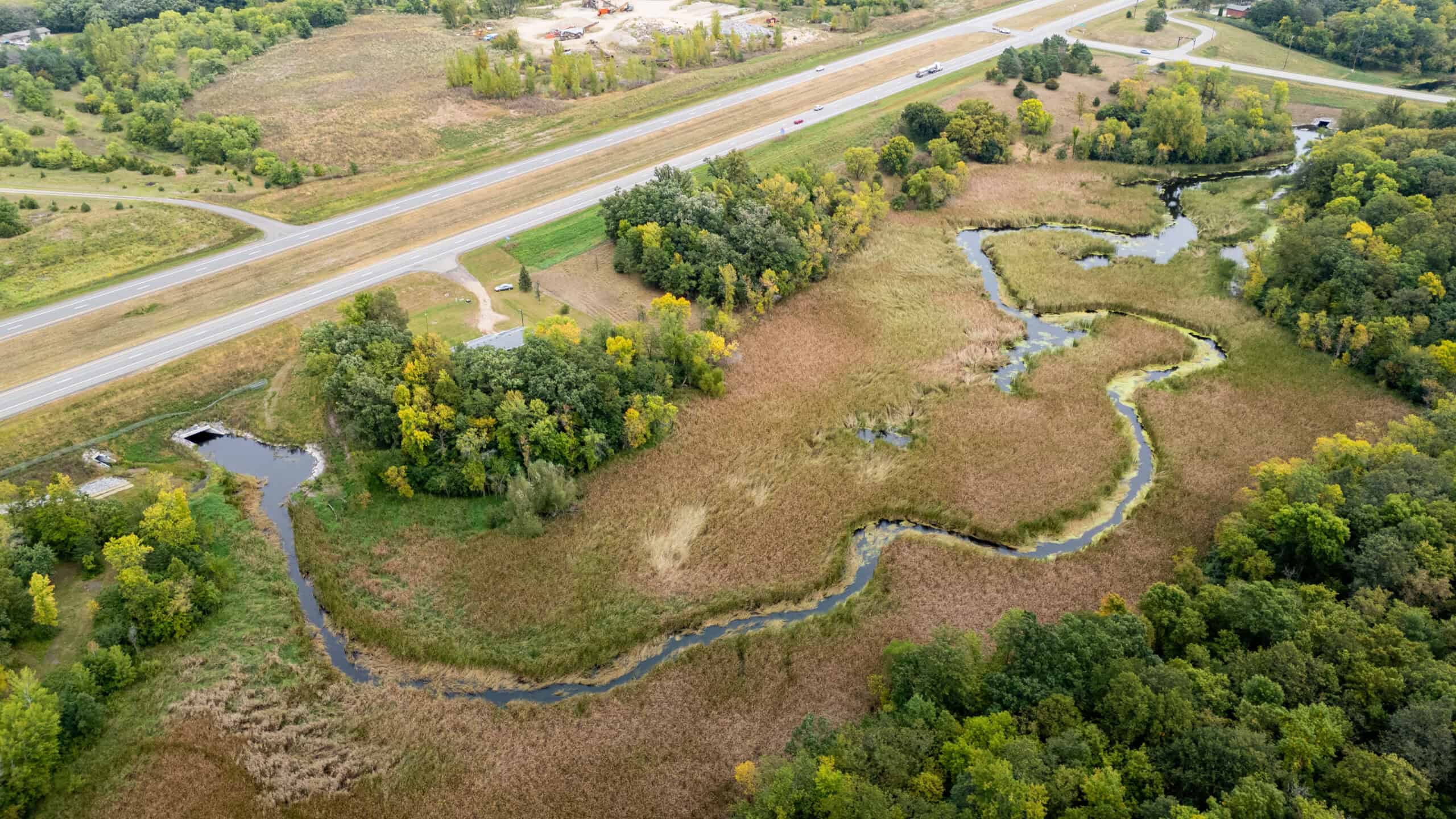
- Public Sector
- State Agencies
Market
- Drainage
- Engineering
- Roadways + Interchanges
- Transportation
Services
- Stearns, Minnesota
Locations
Challenge: MnDOT District 8 (southwestern Minnesota) received funding from the Highway Safety Improvement Program (HSIP) in 2022 to reconstruct a two-lane rural section of Trunk Highway 23 (TH 23) into a four-lane divided highway in Stearns County. Referred to as the “North Gap” project, this segment for rural, two-lane roadway between Paynesville and Richmond is a critical remaining gap in the overall TH 23 corridor.
Solution: HR Green was selected on the design team to complete the wetland mitigation and permitting, as well as drainage design and stormwater permitting for the nine-mile North Gap highway corridor. With an increase of over 25 acres of impervious area, the project included the design of 17 rate control or infiltration basins. Four new box culverts requiring stream relocation or realignment and bank stabilization measures along an impaired Kolling Creek were also included in the design.
HR Green’s role on this project included leadership in roadway design for a four-lane highway, county road design, construction staging, driveway and direct access design, roadway drainage, coordination with the MnDOT bridge office for multiple box culverts, environmental, agency coordination, and permitting tasks. The project was driven by an extensive drainage design, including a substantial review of the preliminary design cross sections, ditch design, HydroCAD models, permanent and temporary basin design, culvert design, and storm sewer design.
Using the Natural Channel Design process, HR Green also worked with MnDOT and the Minnesota Department of Natural Resources (MNDNR) to relocate a reach of Kolling Creek. A fluvial geomorphic survey and bed/bank stability analysis were performed on the existing reach to provide reference data related to planform, profile, and cross-section dimensionality. These reference reach data were then used to develop plans for relocating the segment where one of the new culvert and critter crossings are planned.
The relocated channel incorporates a low-flow channel within the banks of the full channel, access to floodplains, and alternating pools and riffles to accommodate the appropriate hydraulic geometry needed for a resilient channel form. Bioengineering and riparian plant community establishment are planned for the banks and floodplain to provide roughness, soil stability, and habitat re-establishment.
Benefits: Completion of the North Gap segment between Paynesville and Richmond is a critical remaining gap in the overall TH 23 corridor. The expanded four-lane highway improves the region’s connectivity while preserving the unique aquatic environment.
